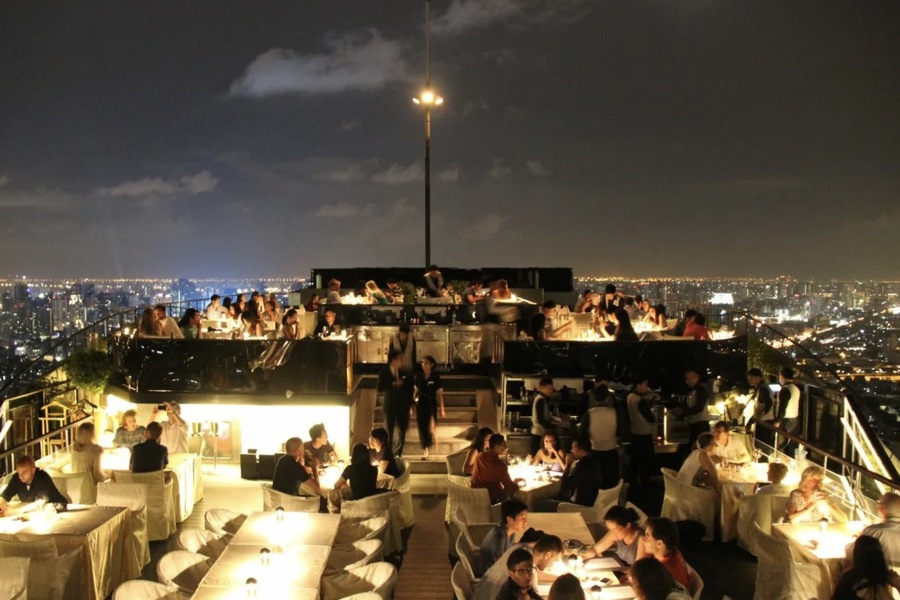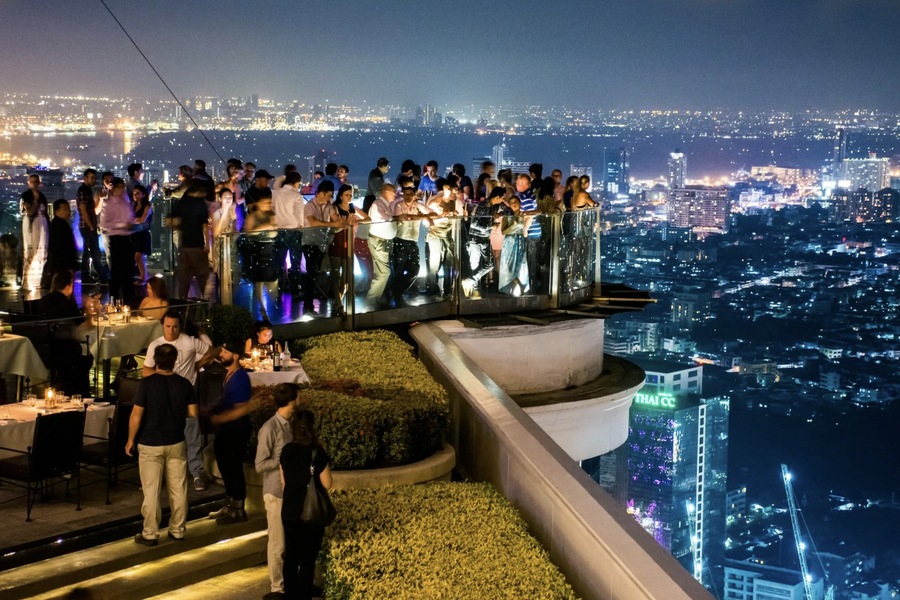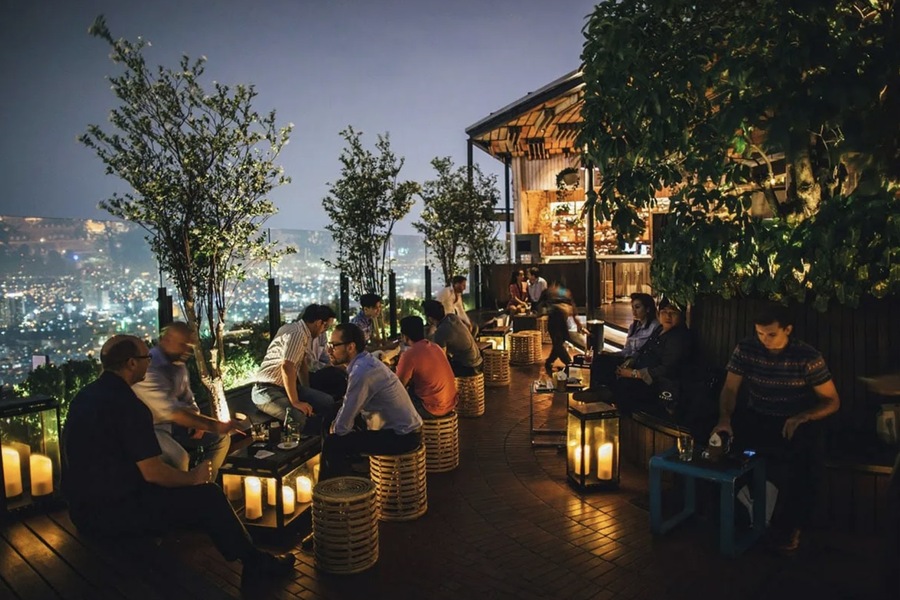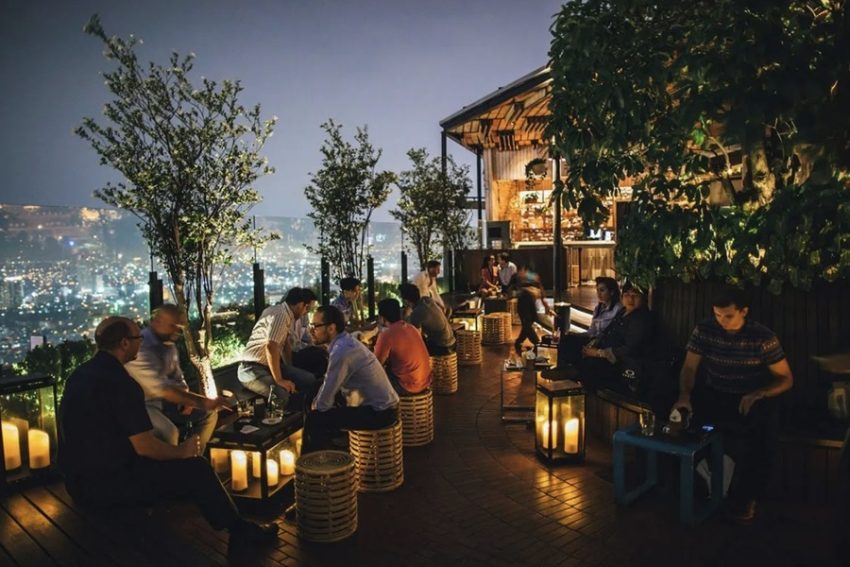Rooftop bars have rapidly become an iconic part of urban landscapes across the world. Combining the allure of open-air dining with an atmosphere rich in exclusivity and excitement, these elevated venues are changing the way people socialize, celebrate, and relax. Known as the best rooftop bars in the city, these spots not only offer a fresh perspective on their surroundings but also embody the spirit of innovation in the food and beverage industry.
From New York to Bangkok and London to Sydney, rooftop bars are creating unique spaces that feel like a getaway within the city—a place to escape the ordinary and indulge in luxury. But what exactly makes rooftop bars so appealing, and why have they become such a cultural phenomenon?
Page Content
The Allure of Rooftop Bars: Why Are They So Popular?
1. Ambiance and Atmosphere
A rooftop bar provides an experience that transcends the usual dining outing. Elevated above the hustle and bustle of city streets, rooftop bars are designed with unique, sophisticated settings where patrons can unwind with friends or loved ones. The atmosphere is often vibrant yet relaxed, with views that evoke a sense of awe and connection to the city around them. Patrons are treated to sweeping vistas that may include iconic landmarks, scenic rivers, or twinkling city lights, depending on the location.
Rooftop bars aren’t just places to grab a drink—they’re destinations for events, from after-work happy hours to high-energy parties. Many rooftop venues feature live music, international DJs, and ambient lighting that brings the atmosphere to life at night. By creating a multi-sensory experience that combines beautiful sights, carefully curated music, and high-quality food and drinks, rooftop bars offer a place to gather and celebrate life’s moments in style.
2. Unique and Creative Menus
One of the most distinguishing features of rooftop bars is their food and beverage menu. Unlike typical bars, rooftop venues often focus on signature cocktails and dishes that reflect the location’s essence. Whether it’s a New York rooftop crafting drinks with locally sourced herbs or a Bangkok bar featuring exotic Thai flavors, the creativity is unmatched. Many rooftop bars collaborate with top mixologists who specialize in crafting cocktails that appeal to the senses. Fresh ingredients, artistic presentation, and unexpected flavor combinations are common.
A menu at a rooftop bar is also often designed to be “shareable” to promote socializing. Small plates, tapas, and bite-sized options are popular choices, allowing groups to sample a range of flavors together. The emphasis is on quality and creativity rather than quantity, with dishes often crafted to look as beautiful as the surroundings.
3. Cultural Appeal to Millennials
Millennials are known for prioritizing experiences over material possessions, and rooftop bars offer precisely the type of memorable experience they seek. As one of the largest demographics, millennials have a significant influence on the hospitality industry. They appreciate spaces that feel unique, photogenic, and exclusive. Rooftop bars check all these boxes, making them a favorite destination for this generation.
The social media effect has also contributed to the popularity of rooftop bars. Millennials love to capture and share their experiences, and rooftop bars offer the perfect backdrop. Whether it’s a photo of a beautifully crafted cocktail against a sunset-lit skyline or a group shot with city lights twinkling in the background, rooftop bars provide an Instagrammable moment that patrons are eager to share.
A Brief History of Rooftop Bars: From the 1890s to Today
The concept of rooftop dining and entertainment has roots that date back more than a century. In 1890, the Casino Theatre in New York opened one of the first rooftop gardens, where patrons could escape the noise of the streets below and enjoy fresh air, soft drinks, and music. This early rooftop venue became known for its relaxed atmosphere and elegance, but its popularity was due in part to the ability to serve alcohol—a rarity in public spaces at the time.
This rooftop trend gained momentum, with venues like Madison Square Garden adopting the rooftop garden concept. These rooftop complexes, adorned with neoclassical decor, fountains, and arches, could accommodate large crowds and were considered a high-society experience. Yet, despite their popularity, rooftop bars and gardens declined as air conditioning became common in the 1920s, making indoor spaces more comfortable during the hot summer months. Rooftop bars fell out of fashion as movie theaters and jazz clubs became the go-to entertainment spots.
The rooftop bar phenomenon re-emerged in the late 1990s and early 2000s as cities began to redevelop urban spaces. The rise of boutique hotels in cities worldwide fueled the resurgence, with rooftop bars providing a stylish and profitable addition to these hotels. Rooftop venues became synonymous with luxury and exclusivity, and the trend quickly spread to cities around the world, each with its own unique take on the rooftop experience.

Rooftop Bar Design Trends and Innovations
1. Blending Indoor and Outdoor Spaces
Modern rooftop bars are designed to function in any weather, which means creating an indoor-outdoor flow is essential. Many rooftop bars feature retractable roofs, movable glass walls, or weatherproof outdoor furniture that allows them to operate year-round. In colder climates, rooftop bars often feature heaters or cozy fire pits to maintain comfort even during the winter months.
2. Greenery and Eco-Friendly Design
Rooftop bars often incorporate greenery in the form of plants, trees, and vertical gardens to create a natural atmosphere. Eco-conscious patrons are drawn to spaces that emphasize sustainability, and this is especially appealing in urban settings where greenery is often limited. Bars like London’s Culpeper Roof Garden have even taken this a step further by growing their own herbs, which are used in the cocktails they serve.
3. Multi-Purpose Space for Events
Many rooftop bars are designed to be versatile and capable of hosting a range of events, from morning yoga sessions to evening cocktail parties. Rooftop spaces are highly adaptable and can be used for weddings, corporate gatherings, brunch events, and more. The ability to transition seamlessly between different types of events makes rooftop bars popular with event planners and venue managers.
Iconic Rooftop Bars Around the World
New York – 230 Fifth Rooftop Bar
Located in Midtown Manhattan, 230 Fifth offers some of the best views of the Empire State Building and the New York City skyline. This bar is especially popular during the winter months, when heated igloos are set up on the roof, allowing patrons to enjoy the view without braving the cold. The menu includes creative cocktails, seasonal dishes, and a lively ambiance that draws tourists and locals alike.
Bangkok – Sky Bar at Lebua
Sky Bar at Lebua in Bangkok gained worldwide fame after it was featured in the movie “The Hangover Part II.” With its views of the Chao Phraya River and the entire cityscape of Bangkok, it has become one of the most iconic rooftop bars in Asia. This bar is known for its exceptional cocktails, luxurious decor, and its unbeatable view of the bustling city below.
Tel Aviv – The Poli House Rooftop Bar
The Poli House in Tel Aviv blends the modern and historic with a rooftop pool, stunning views of the city’s Bauhaus architecture, and a chic bar offering innovative cocktails. Located in the heart of the city, it’s a popular spot for both locals and tourists looking to enjoy the vibrant Tel Aviv nightlife scene.
Sydney – O Bar and Dining
Set atop Australia Square in Sydney, O Bar and Dining is a revolving rooftop bar and restaurant offering 360-degree views of Sydney’s harbor, the Opera House, and the Harbour Bridge. Patrons enjoy fine dining with seasonal Australian ingredients, paired with an extensive wine list and signature cocktails.

How to Ride the Rooftop Bar Wave: A Guide for Restaurateurs and Bar Owners
If you’re considering opening a rooftop bar, or simply want to elevate your existing bar or restaurant, here are some strategies to keep in mind:
- Craft a Unique Identity: Rooftop bars that succeed have a strong identity and unique offerings that set them apart. Whether it’s a particular theme, a focus on local ingredients, or an exceptional view, create something memorable that will make patrons want to return and share their experience with others.
- Optimize for Day and Night: While rooftop bars are naturally popular at night, many can benefit from operating during the day as well. Consider offering brunch or afternoon tea service, which can attract a different crowd and maximize the use of your space.
- Plan for All Seasons: One of the challenges of rooftop bars is making them viable year-round. Solutions include heated outdoor furniture, retractable roofs, and seasonal design changes that make the space adaptable to weather changes.
Conclusion: The Future of Rooftop Bars
Rooftop bars have captured the imagination of city dwellers and travelers around the world. They represent a blend of urban sophistication and natural beauty, providing an escape from the ordinary and a taste of luxury. As urban landscapes continue to evolve, rooftop bars will undoubtedly remain at the forefront of experiential dining and entertainment, reshaping cities and creating unforgettable moments for patrons everywhere. Whether it’s a breathtaking view, an innovative menu, or a memorable ambiance, rooftop bars have proven that they are more than just a trend—they’re here to stay.
Baseball fan, coffee addict, audiophile, hand letterer and front-end designer. Performing at the crossroads of design and sustainability to develop visual solutions that inform and persuade. My opinions belong to nobody but myself.


